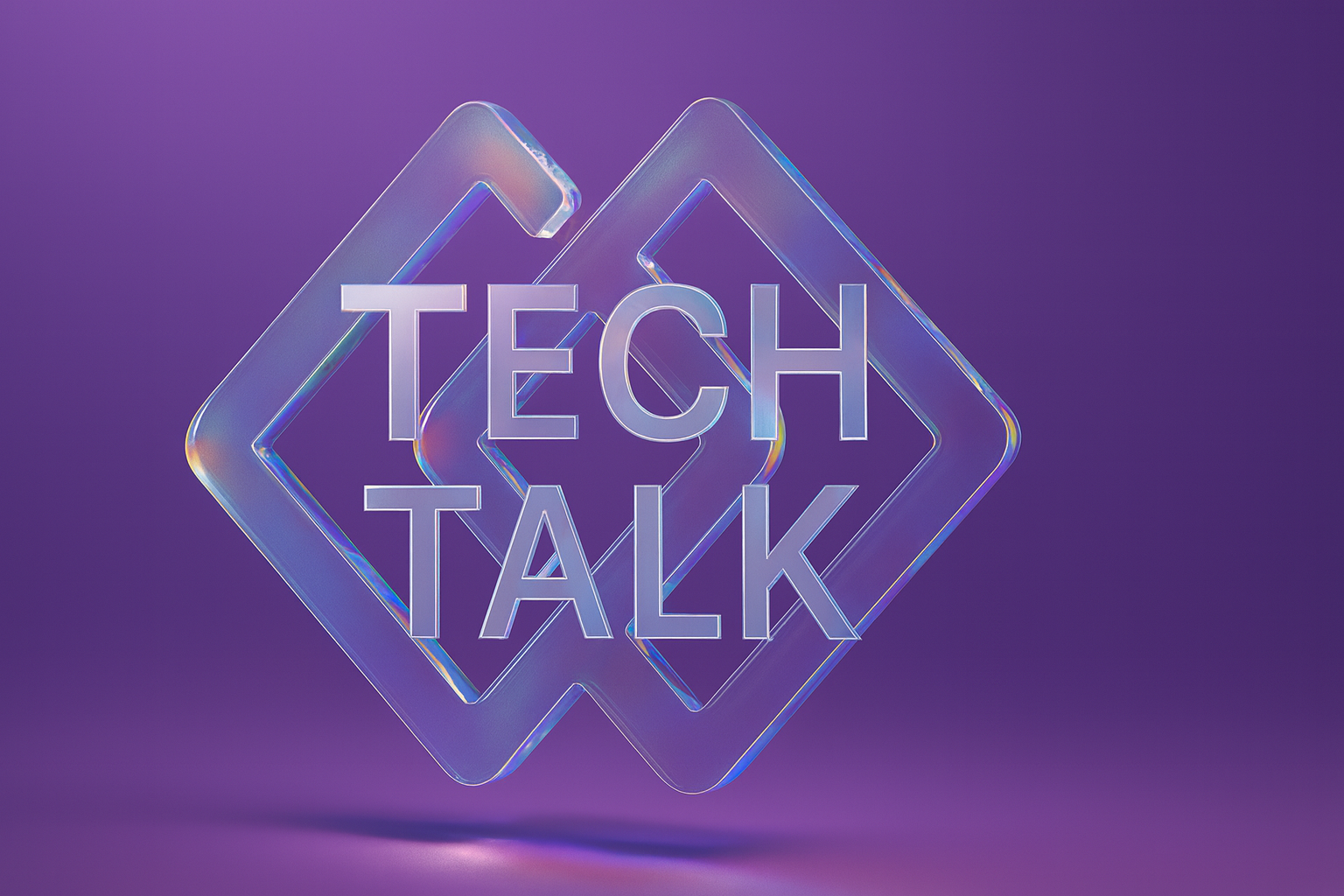Generative AI is transforming industries with high-impact use cases across the board. Let’s face it – the AI revolution is no longer coming; it’s already here. With the generative AI market set to exceed USD 100 billion by 2030 and a lot of U.S. employees already using these tools at work, we’re witnessing a fundamental shift in how businesses operate.
Generative AI is revolutionizing multiple business functions, from sales and marketing to customer operations and software development, delivering measurable outcomes and economic benefits.
Amid all the buzz and technical jargon, what really matters is how this technology solves real problems and creates tangible value through various generative AI applications.
In this guide, we’ll explore 12 real-world applications of generative AI that are transforming industries right now, tackling the risks and opportunities that business leaders need to understand. Let’s get right into it, shall we?
1. Content Creation That Drives Measurable Marketing Results
Generative AI has become a game-changer for marketing teams by enabling high-quality content creation at an unprecedented scale. Mongoose Media implemented Jasper (an AI writing assistant) and saw a 166% increase in organic traffic in just two months.
The most successful marketing teams are developing a new creative workflow where humans define strategy, brand voice, and emotional resonance, while AI handles production, variation, and scale. Humans then curate, refine, and ensure an authentic connection with the audience.
Beyond content creation, generative AI powers personalization engines that create truly individualized experiences for each customer. This includes dynamic CTAs, tailored product descriptions, and automated A/B testing that optimizes content for different audience segments. Additionally, generative AI enables the creation of personalized emails, enhancing customer communication and engagement by tailoring messages to individual preferences.
2. Intelligent Support Systems That Transform Customer Experience
Customer service operations are being revolutionized through AI in customer care implementations that enhance both efficiency and quality of support. Generative AI implementation is predicted to add up to $16 trillion to the global economy by 2030. This technology creates better customer experiences while reducing agent burnout.
AI-driven virtual assistants are also being integrated to provide self-service options, optimize e-commerce processes, and facilitate faster service delivery by assisting with tasks such as order management and customer inquiries.
Beyond direct customer interactions, generative AI works behind the scenes through real-time assistance with contextual reply suggestions, instant multilingual translation, and automatic call summaries capturing key points and action items.
Companies implementing these technologies report not just improved customer satisfaction, but also higher agent retention – a significant competitive advantage in an industry notorious for turnover.
3. Software Development Acceleration Through AI Assisted Coding
Software development has seen dramatic productivity gains through AI-assisted coding and quality assurance tools. GitHub Copilot users complete tasks 55% faster than developers working without AI assistance. Generative AI tools reduced time spent on boilerplate code by 55%, freeing developers to focus on creative problem-solving.
By implementing AI solutions, companies have reported a significant reduction in technical debt, leading to faster app delivery and enhanced organizational performance.
These AI systems provide context-aware code completions, automated bug detection with fix suggestions, comprehensive test generation, and clear documentation drafting, all of which improve productivity. This shifts the developer’s role toward higher-level functions – focusing on what to build rather than the mechanics of building it.
4. Medical Innovation Through Automated Documentation and Drug Development
Healthcare providers and pharmaceutical companies are leveraging generative AI to enhance patient care and improve research outcomes. AI systems that automate clinical documentation streamline patient care, saving clinicians about one hour per day and reducing burnout by 40%. In pharmaceutical research, generative AI accelerates drug discovery by generating and evaluating novel drug candidates much faster than traditional methods.
By leveraging advanced AI tools, healthcare organizations are able to minimize mistakes in processes such as clinical documentation and patient data handling, ultimately reducing errors and allowing healthcare professionals to focus more on delivering high-quality patient care.
These applications shine brightest where traditional methods have struggled – in complex and rare diseases. Generative AI can spot patterns across disparate research papers, genetic data, and clinical trials that humans might miss, demonstrating the power of AI in genomics to open new treatment paths for previously untreatable conditions.
5. Legal Document Automation That Elevates Attorney Effectiveness
Legal practices are being transformed through AI tools that streamline document creation and analysis processes. Harvey.ai, backed by OpenAI, helps law firms quickly generate high-quality NDAs and other standard documents. An Am Law 100 firm utilized generative AI to review nearly 130,000 documents in a government investigation, resulting in a reduction of review time by 50% to 67%.
Generative AI tools can also analyze and generate concise summaries of long documents, aiding in tasks such as extracting key insights from extensive legal texts and improving the efficiency of document review processes.
These systems provide automated first drafts using firm-approved templates, intelligent contract review flagging risks, precedent analysis, and due diligence acceleration through automated document processing.
By maintaining attorney oversight for AI-generated content, firms combine the speed of automation with the judgment of experienced lawyers – giving clients the best of both worlds.
6. Financial Intelligence Engines That Enhance Deal Making Capabilities
Financial institutions are using generative AI to enhance analytics, risk assessment, and deal-making capabilities. Private equity firms using AI-powered document analysis report expanding their deal pipelines to a great extent. Tribe AI’s generative engine efficiently analyzes Confidential Information Memorandums (CIMs) and other deal documents, extracting key financial metrics and growth indicators.
Financial institutions are also leveraging internal data to create more sophisticated models and generate scenario analyses, enhancing their decision-making capabilities and operational efficiency. For credit risk assessment, generative AI creates more sophisticated models by analyzing traditional and alternative data sources, creating synthetic datasets, generating scenario analyses, and automating parts of the underwriting process.
Due diligence, traditionally one of the most labor-intensive aspects of deal-making, has been transformed through AI tools that automatically extract key information from documents and highlight potential issues.
7. Engineering Innovations That Expand Manufacturing Possibilities
Engineering and manufacturing processes are being reimagined through AI-powered design tools that expand what’s possible. Autodesk Fusion’s generative design capabilities have demonstrated the ability to reduce part weight by 30% while maintaining or improving performance – revolutionary for industries where weight directly impacts cost and efficiency.
The implementation of new tools, such as AI-powered design software, allows engineers to explore thousands of possible designs, including options human designers might never imagine, thereby expanding manufacturing possibilities.
This approach inverts the design process: instead of creating a single design and iteratively improving it, engineers specify requirements and constraints, then let generative AI explore thousands of possible designs, including options human designers might never imagine.
Generative AI is also transforming equipment maintenance through automated documentation that adapts to specific equipment, dynamically updates with design changes, and tailors procedures to technician skill level.
8. Retail Experiences That Convert Browsers Into Buyers
Retailers and ecommerce platforms are enhancing customer experiences and operational efficiency through various AI applications. AI-powered product listing generation creates compelling, SEO-optimized descriptions at scale, ensuring complete catalog coverage while maintaining brand voice. Virtual try-on technologies, like Ikea’s Kreativ AR tool, let customers visualize products in their actual environments, addressing purchase uncertainty and reducing returns.
Generative AI also enables the creation of personalized responses to customer inquiries, improving customer satisfaction and streamlining service processes in the retail sector.
Similar technologies exist for clothing, cosmetics, eyewear, and accessories, allowing customers to see products on themselves without physical fitting rooms. Retailers also use generative AI to create personalized product bundles, generate seasonal variations, produce virtual photoshoots, and design optimized store layouts.
9. Creative Production Tools That Amplify Artistic Vision
Creative industries are finding that generative AI can augment artistic processes while dramatically reducing production costs. Studios using diffusion models and other generative techniques have cut visual effects costs by up to 40%, reallocating resources from technical implementation to creative direction. These technologies accelerate creative workflows through scriptwriting assistance, background generation, character animation, voice synthesis, and music composition.
Generative AI assists creators by generating new ideas for content, such as scriptwriting, background generation, and character animation, thereby amplifying artistic vision and reducing production costs.
Rather than replacing human creativity, generative AI amplifies it by handling technical implementation while creators focus on storytelling and artistic direction. Gaming studios use AI to create procedural landscapes, generate responsive NPC dialogue, design level variations, and adapt difficulty based on player skill.
10. Personalized Learning Systems That Accelerate Skill Development
Educational institutions and corporate training programs are using generative AI for personalizing learning experiences at scale. The Khanmigo pilot program showed that students using Khanigo improved their test scores by an average of 20% over a semester. This improvement comes from AI's ability to adapt content, pacing, and teaching approach to each student's unique needs.
For teachers, generative AI transforms content creation by generating custom lesson plans, assessments, and materials aligned with specific learning goals. Professional training sees similar benefits through scenario-based learning that adapts to trainee decisions, generating realistic simulations for various skills.
11. Advanced Data Solutions That Overcome Fundamental Limitations
Data scientists are overcoming fundamental challenges in their field through generative AI’s ability to create and enhance datasets. Generative AI offers an elegant solution to data science challenges through synthetic data generation – creating artificial datasets with the same statistical properties as real data without exposing sensitive information. In healthcare, privacy-safe synthetic Electronic Health Records enable algorithm development without exposing actual patient data.
Generative AI tools also help employees find relevant information and answers quickly, streamlining their workflow and improving access to important data, thereby optimizing operational efficiency and knowledge management.
These approaches are particularly valuable for imbalanced datasets where rare conditions are underrepresented. Data scientists also use generative AI for data augmentation – creating variations of existing data to improve model robustness and prevent overfitting.
12. Proactive Security Frameworks That Anticipate Threats
Security professionals are adopting generative AI to strengthen defenses by simulating threats and detecting anomalies. Security teams use large language models to generate phishing variants for training exercises, creating realistic attack scenarios that test defenses and employee awareness. By continuously generating new phishing templates, organizations can train employees, test email filtering systems, identify security gaps, and measure security awareness improvements.
Generative AI also creates realistic anomaly logs for security monitoring systems, allowing teams to test detection capabilities without actual system compromise. Generative AI technologies also enhance regulatory compliance by automating processes and providing safeguards against regulatory risks, ensuring adherence to necessary legal frameworks. This shifts security from reactive to proactive postures – building stronger defenses against emerging attack vectors before they’re exploited.
Business Value That Transforms Organizations
Generative AI delivers substantial value across three critical dimensions that translate to tangible business outcomes and business growth potential. Generative AI tools significantly increase productivity by streamlining processes, automating routine tasks, and improving employee collaboration, ultimately leading to substantial time savings and improved overall performance. Let’s examine each in detail.
Dramatic Cost Efficiency Improvements
Generative AI could add $2.6 to $4.4 trillion annually to the global economy, with much coming from productivity improvements and reducing costs. In high-impact sectors, organizations may see an AI-generated value of 15–40% of their total revenue.
Generative AI technologies help organizations reduce costs by automating processes, enhancing operational efficiency, and optimizing decision-making, leading to significant financial savings.
Accelerated Innovation Cycles
Generative AI accelerates development cycles, allowing product teams to generate and test concepts in days instead of weeks, shrinking content creation timelines, and identifying promising drug candidates much faster.
Generative AI tools also suggest improvements to existing work, enhancing productivity and driving innovation by identifying issues and recommending enhancements tailored to individual needs.
Customization Without Compromise
Organizations can now create thousands of content variations for specific segments, adapt product experiences to individual preferences in real-time, and adjust learning materials to student comprehension styles.
Generative AI enables organizations to create personalized responses to customer inquiries, enhancing customer satisfaction and streamlining service processes by providing tailored, efficient answers.
Shaping the Future of Work Through AI Transformation
Generative AI is changing how we create, work, and innovate. The organizations seeing the greatest impact are starting small—focusing on clear, high-value use cases—and scaling thoughtfully.
Early adopters of generative AI technologies are already seeing significant advancements in operational efficiency and competitive advantage, showcasing the benefits of proactive implementation and innovation.
Success comes from pairing AI’s capabilities with human insight, using each where it matters most. As this technology reshapes industries, the leaders will be those who move with purpose, balancing innovation with responsibility.
Ready to harness the transformative power of generative AI for your organization? Tribe AI connects you with world-class AI experts who can design and implement custom solutions tailored to your unique business challenges. Don’t wait for competitors to gain the advantage – start your AI journey with Tribe today.
FAQs About Enterprise AI Implementation
Navigating generative AI implementation raises common questions that deserve thoughtful answers. Here are responses to the most frequently asked questions.
What data is safe to use with generative AI models?
Stick with non-sensitive data without privacy or IP restrictions. Avoid submitting customer PII, trade secrets, or confidential business information to external AI services without proper safeguards.
Organizations should also consider leveraging internal data sources that are proprietary and confidential, ensuring that proper safeguards are in place to protect sensitive information.
How can we calculate the ROI of implementing generative AI?
Measure direct impacts (time savings, cost reduction, revenue increases, quality improvements) and strategic benefits (customer experience, employee satisfaction, market differentiation).
By saving valuable time through automation and efficiency gains, organizations can focus more on strategic initiatives and high-value activities, further enhancing their ROI.
What regulations apply to generative AI use in business?
Consider data protection regulations (GDPR, CCPA), industry-specific regulations (HIPAA, FINRA), the EU AI Act, copyright laws, and non-discrimination laws.
Ensuring regulatory compliance is essential when implementing generative AI, as it helps organizations adhere to necessary legal frameworks and avoid potential risks.
Will generative AI lead to job displacement?
Generative AI will transform jobs rather than simply eliminate them. Organizations should focus on reskilling employees, creating transition paths, using AI to augment human capabilities, and emphasizing uniquely human skills.
Generative AI tools can also enhance the employee experience by streamlining internal processes, improving communication, and creating a better work environment, ultimately leading to higher productivity and engagement.













